With Balthus there are no half measures. He is an artist who is loved or detested.
Considered one of the great masters of art of the twentieth century, Balthus is undoubtedly one of the most unique painters of his time. His work, diverse and ambiguous, as admired as rejected, followed a path virtually contrary to the development of the avant-garde.
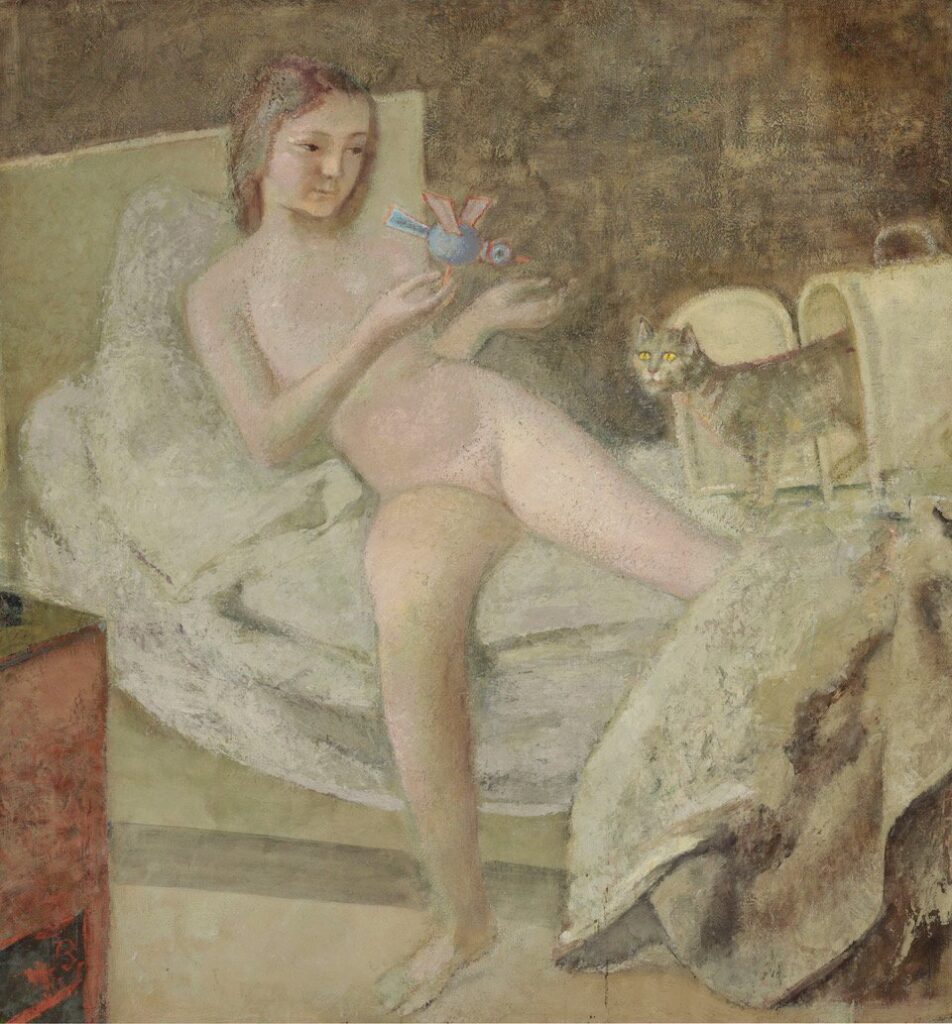
His personal pictorial language, with sensual nuances of delimited contours, combines techniques of ancient masters with certain aspects of Surrealism. His images embody an infinity of contradictions.
Balthus is an expert in mixing opposite poles: tranquility with extreme tension, dream with reality, mystery with everyday life and something even more original: innocence with eroticism.
The main theme that remains in the air of his paintings is that halo, that luminous glow of strange emotions called adolescence.
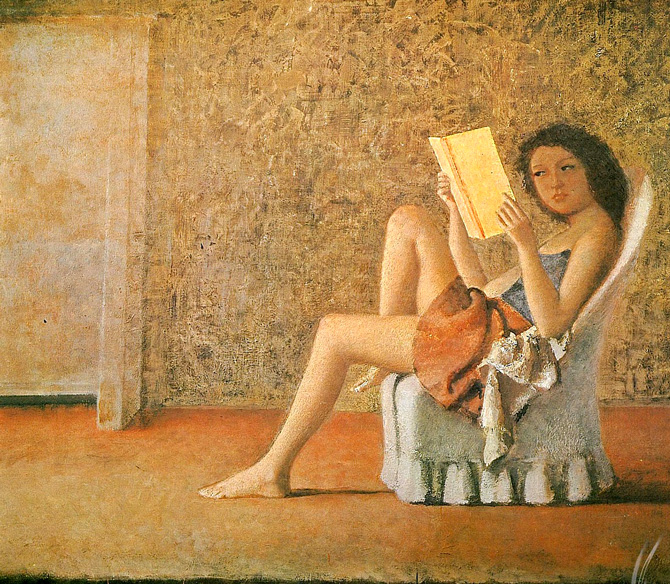
This demanding and capricious artist, was sponsored by some of the greatest creators of the twentieth century, however, he began painting in a period of enormous cultural anxiety, for the invasion of Nazism and the outbreak of World War II. It began in Post-Impressionism, by the hand of Pierre Bonnard. His work could be between Surrealism and Magic Realism. But it also has profound Renaissance influences: Masaccio, Piero della Francesca… from the Baroque: Caravaggio and Naturalism: Poussin, Géricault, Gustave Courbet…
Balthus Klossowski de Rola was born in Paris in 1908, in an illustrated family of Polish origin. His father, Erich Klossowski, historian and art teacher, came from the changing territories of Poland. His mother, Baladine Spiro, painter, was the daughter of Russian Jews escaped from the polygroms. After their meeting in Germany, they settled in Paris, where their two children were born. His brother was a famous writer, Pierre Klossowski.
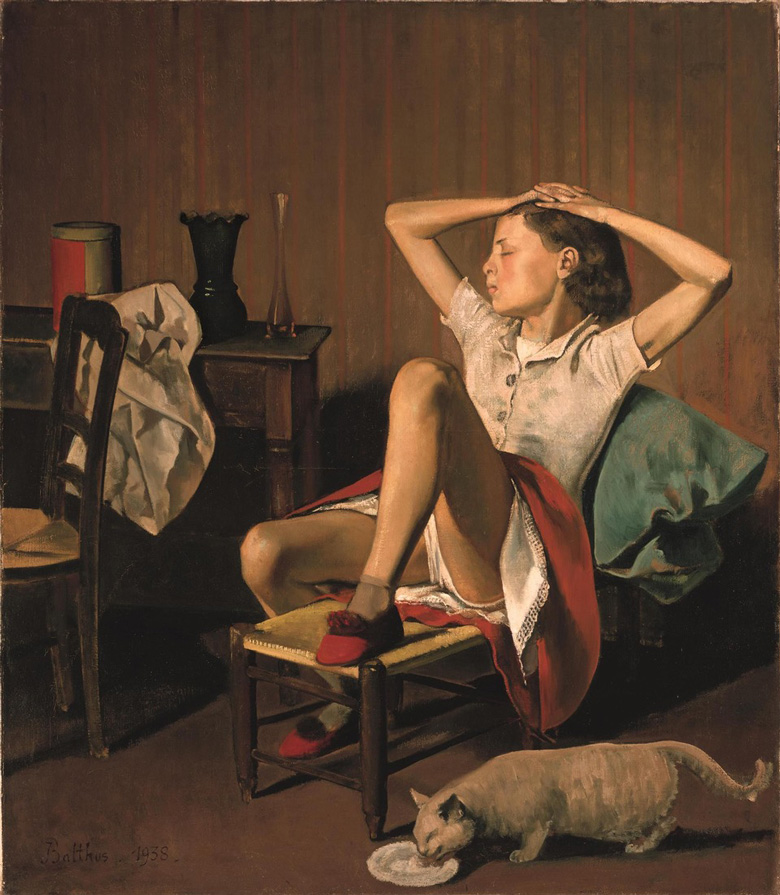
Balthus grew up in an environment marked by art. Throughout his house, artists paraded his talent: Pierre Bonnard, his father’s intimate and Rainer Maria Rilke, his mother’s lover. Famous painters such as Matisse, Bonnard and Jean Cocteau were regular guests in the house.
The child was trained in this privileged cultural environment, under the special protection of the Czech- Austrian poet Rilke. Encouraged by him, Balthus decided to learn to paint in the Louvre Museum, where he went every day to copy the great masters.
In an era full of boiling “isms” triumphing in Paris, he never followed the movements in vogue. In his long sessions as a self- taught painter in the Louvre, he was a disciplined copyist of David, Poussin and Chardin. However, he was never interested in the avant-garde.
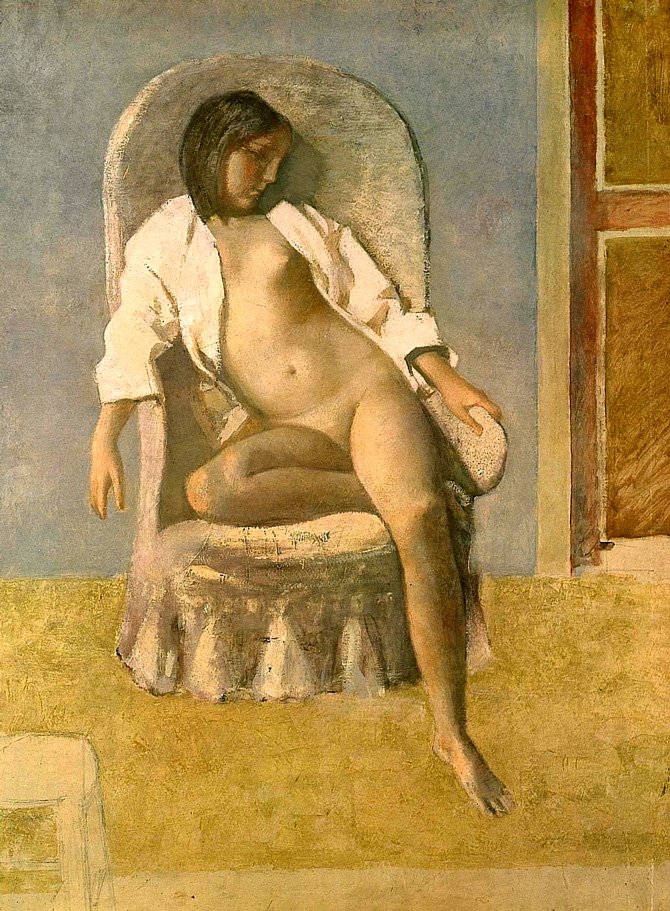
World War I marked the breakup of reverie. His family escaped by taking refuge in Switzerland. His parents separated and his mother joined Rilke.
The poet, who appreciated the talent of the 13-year-old, published “Mitsou“, a book with his first paintings and wrote his prologue. The protagonist was a cat. The cat will appear insistently throughout his work, as a silent witness to the indolence of his characters.
With them he made his first trip to Italy. There he blew his imagination to discover the Renaissance painters. Piero della Francesca‘s works in Arezzo and those of Masaccio in the Brancacci Chapel, merged in his mind with the styles of his French admirers such as Poussin and Courbet.
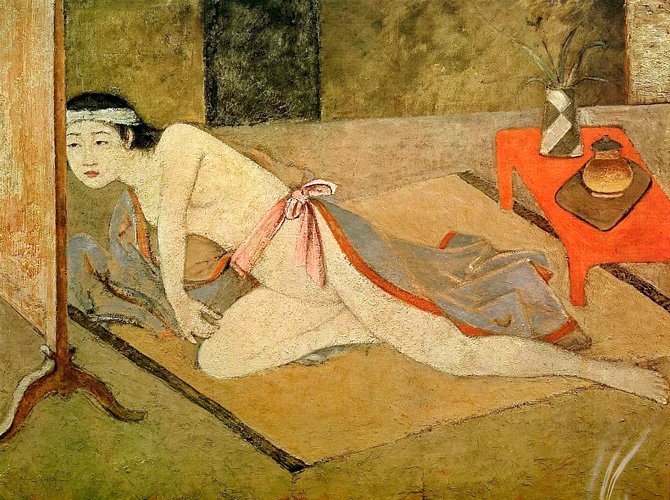
Balthus met his first wife, Antoinette de Watteville, in Geneva. The beautiful aristocrat, was the mother of her two children and posed as a model for some of her paintings as “La jupe blanche“, 1937.
They lived in Geneva, Bern and Freiburg until, after the war, they could return to Paris. There, he became friends with Picasso and Miró, but he stayed away from his artistic path, despising abstract art. He managed to amaze everyone with the mystery of his figurative compositions, populated by girls in full puberty.
Picasso appreciated his painting. According to his memoirs, he told Balthus:
“You are the only one of the painters of your generation that interests me. Everyone else wants to be Picasso. You do not”.
His most influential friend was the writer and philosopher André Malraux. In 1961, being Minister of Culture in France, he appointed Balthus Director of the French Academy in Rome where he spent 16 years.
His life in the beautiful Villa Medici gave him an anonymity nuanced by the rise in the price of his works. There he dedicated himself to restoring the wall decorations of the building and since then, the fresco technique was very present in his painting. In 1962, together with Malraux, he traveled to Asia, where he met a young Japanese translator, Setsuko Ideta, 19 years old. He was 54.
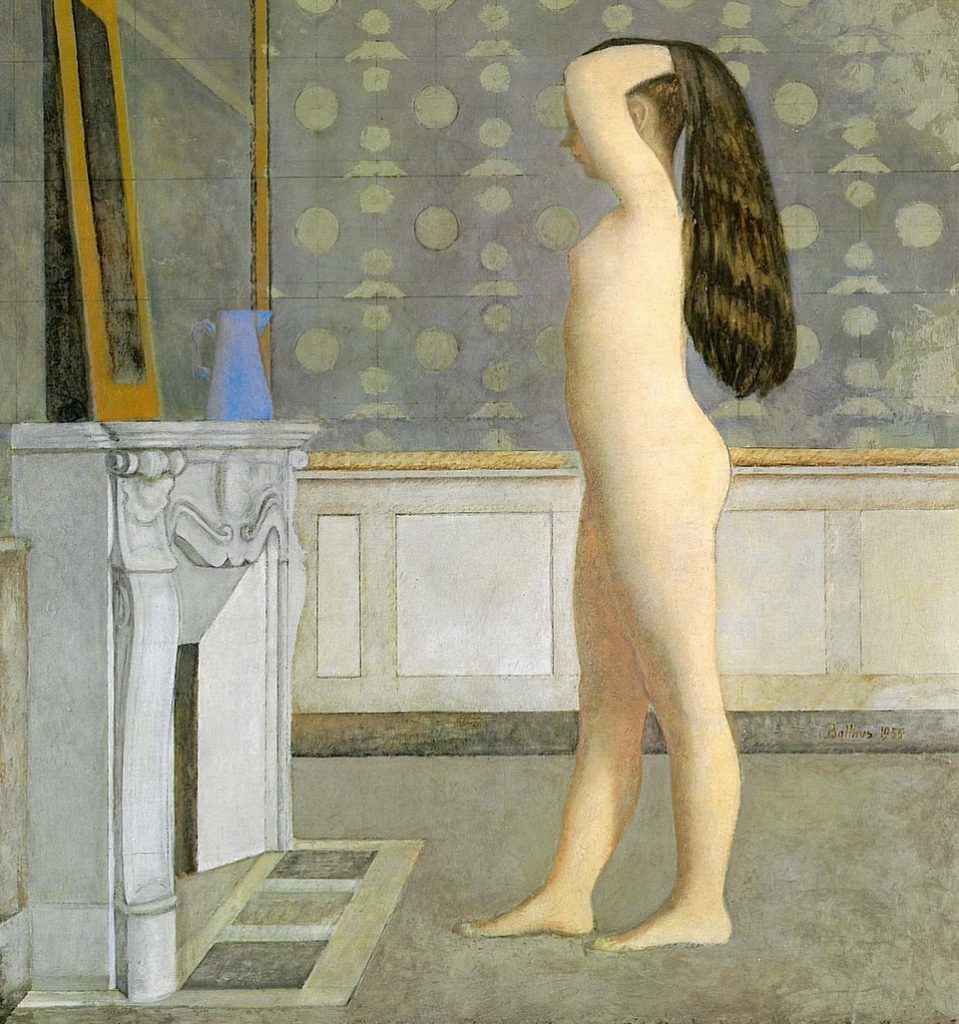
The painter’s marriage to Setsuko, 35 years younger, consolidated his passion for Japanese art and philosophy. She, who admired him blindly, mixed his colours, giving a special glow to his palette.
His dandism was manifested in an impressive collection of kimonos and oriental garments, which he wore daily. The fable about his origins was part of the myth of his lost paradise. Balthus, who attributed his father as the Count of Rola (Poland), embroidered his shield in kimonos, bedding, towels…
Upon leaving his post as Director in the Villa Médici of Rome (1977), his desire to withdraw from worldly noise led him to buy an abandoned hotel, the largest chalet in Switzerland, with 5 floors and 113 windows. There he set up a huge studio and he lived in the huge house for 24 years with his wife and muse, Setsuko, their daughter, Harumi (now, a famous jewelry designer) and his grandchildren, until the end of his days. The Grand Chalet de Rossinière has an enchanted castle on the air. It is a monumental building of the 18th century, near Lake Léman, which today houses the Balthus Foundation, created by Setsuko and Harumi.
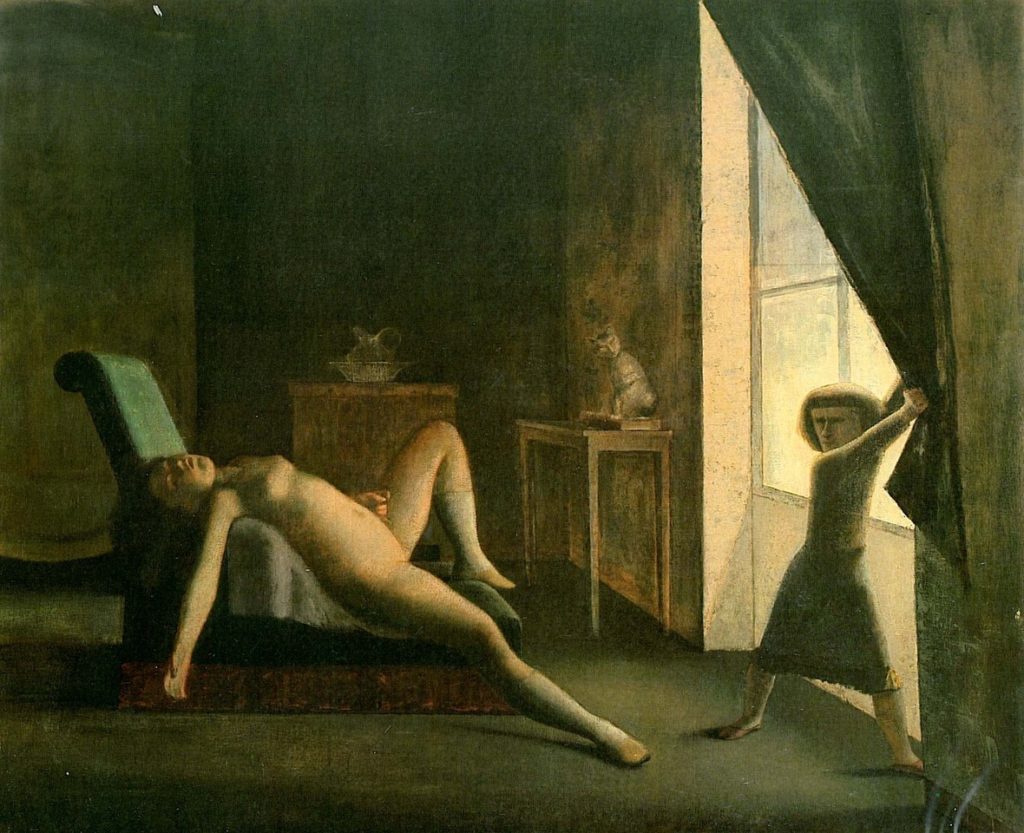
From a young age, his work was well valued by a minority who acquired his paintings at considerable prices. Public recognition was followed by outbreaks of greatness.
He decided that he had an aristocratic past and became, with a lot of imagination, Count Klossowski de Rola. He also boasted a remote relationship with the famous writer Lord Byron by a Scottish grandmother.
He even recreated the genealogy of his mother, Baladine, who moved a Protestant family from southern France, rich Sephardic merchants related to the Russian Emperor, Tsar Nicolas Romanov. But this, like many other things, are invented legends of a great artist.
Balthus liked to joke, saying that by being born on February 29, he was only four years old. His longevity allowed him to go through the entire 20th century as one of the most independent artists. He preferred to qualify as a craftsman.
He witnessed all avant-gard European and American movements. As if by magic, he always remained on the sidelines as a silent spectator. Since his first exhibition in Paris (1934), a sober style, his content and symbolic attention to objects contrasts with his thematic ambiguity.
“I want to look for the extraordinary in ordinary things … suggest, not impose, maintain a touch of mystery in my paintings”
One of the most controversial elements of his painting are those teenage figures endowed with an ambivalent sexuality, between innocence and provocation. Even today, after their death, they are criticized by conservative moralist sectors.
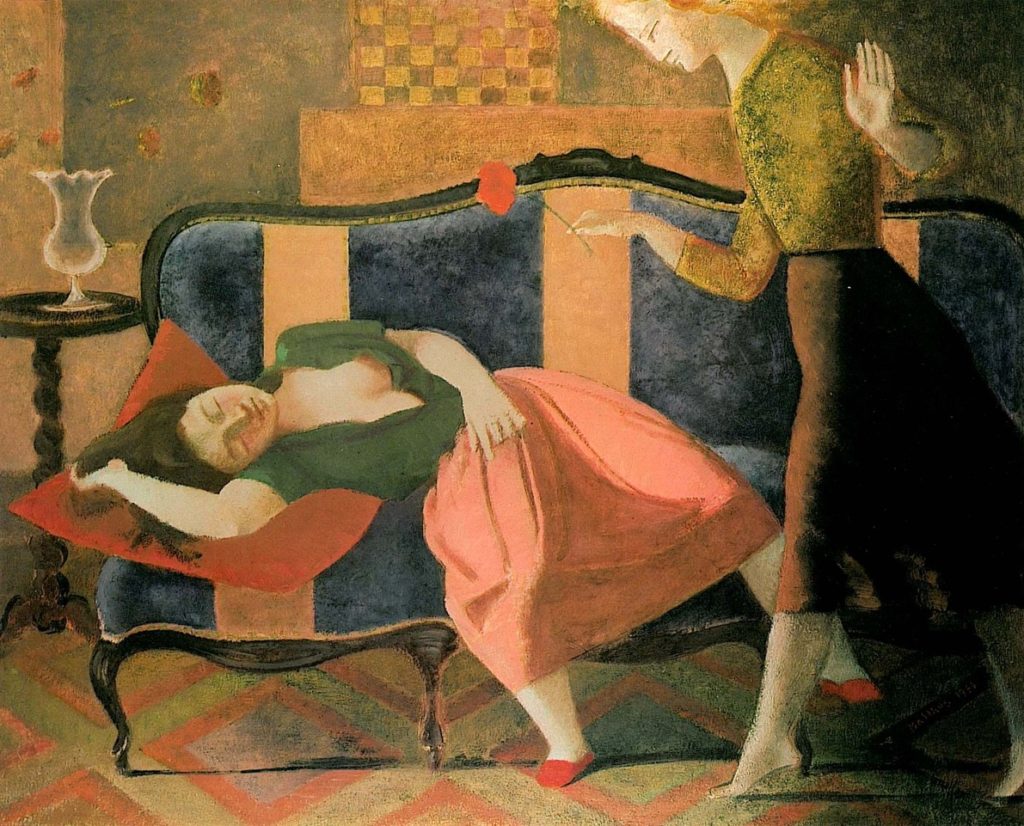
His most criticized paintings were inspired by a niece who lived with him and another neighboring girl, Therese, whom he asked to pose for him naked.
The painter always said that his girls were nothing more than “angels”, an ambiguous qualification, between the profane and the religious, that should be noted considering the artist’s confessed religiosity. Devoted to the Virgin of Czestochowa, he came to visit Pope John Paul II and in his own words: “Painting is praying.”
“What I want to paint is the secret of the soul … the dark and at the same time luminous tension of its cocoon still not fully open.”
Balthus repeated his favorite songs: adolescent girls, absorbed, asleep, looking in the mirror, naked, taking off their clothes and in unorthodox attitudes.
Already in his first exhibition in 1934, his work “The street“, caused a scandal as it represented an episode of harassment. It sparked a heated controversy to the point that the buyer asked him to repaint the hand of the stalker more separated from the girl in the original painting.
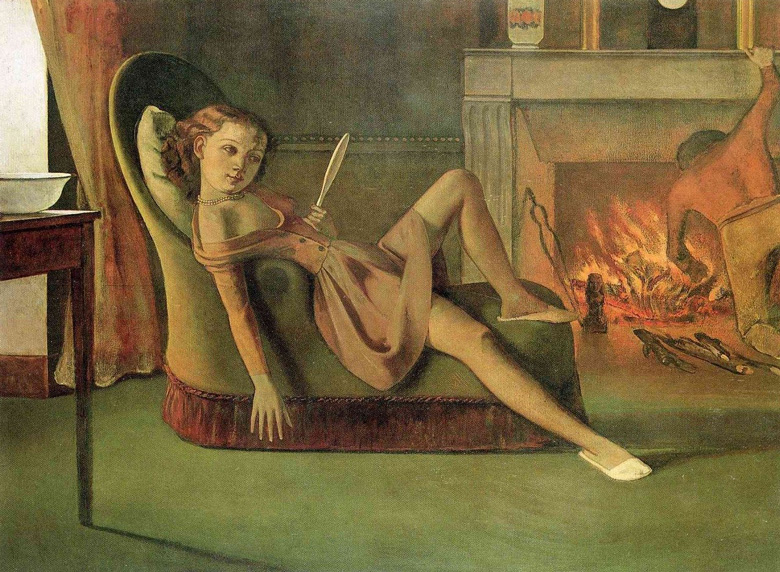
These teenagers were not the only ones who scandalized their exhibitions. In “The Guitar Lesson” we witness the punishment of a student whose clothes are torn by the teacher. The violence is explicit. The sexual connotations, evident. The tone is reduced in scenes whose calm continues to be disturbing.
You could say that Balthus managed to paint the adolescence packaged in silence. His canvases speak of evasion, mystery and a pseudo mysticism full of unknowns.
In the portraits of Therese Blanchard, daughter of her neighbors in Switzerland, the attitude is serious and conscious.
Contemplation tenses. It is necessary to approach these works from the perspective of the world of dreams and especially of Surrealism whose essence Balthus shared with creators such as Salvador Dali and Jean Cocteau. Sigmund Freud‘s theories made sense of the daytime, conscious or subconscious fantasies of artists.
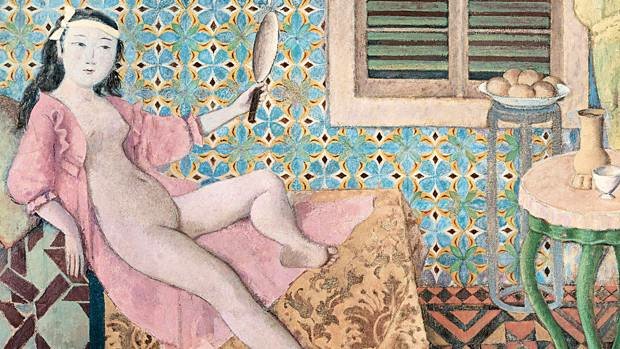
Freudian sexuality was explored from a symbolic perspective, closely linked to childhood.
If this approach led Dali to the suggestion of visual play, Balthus delved into the isolation of teenagers who sleep to escape their confinement. As in “Les enfants terrible” by Jean Cocteau (1929), the walls define a space of confusing emotions.
Balthus himself fled from a reality that bothered him. After World War II he found his refuge in the Château de Chassy, in Burgundy.
In the 1930s he was a close friend of the painters Andre Dérain and Giacometti. But it was his friendship with a writer, that would take him out of his hermit life in France. The personality cult of contemporary artists infuriated him.
“The artist should blur his person every day… find himself in the act of painting and forgetting himself”
However, once again, he shines with contradictions, because he does not forget much of himself when in his self-portrait, painted at 30 years old, he wrote an inscription:
“His Majesty the King of Cats, painted by himself.”
In 1968, on the occasion of a retrospective exhibition dedicated to Balthus at the Tate Gallery in London, its curator John Russell, requested the artist data to publish a biography in the catalog. The painter replied:
“Balthus is a painter whose nothing is known. And now let’s take a look at the paintings. ”
Half a century later, there are many questions about his work that remain unknown.
“How can you think these children are bored?”
Statements like this, from the painter himself, reflect an asymmetry between what he intended to express in his works and what the public perceives. The most obvious is the denial of the supposed eroticism attributed to his characters. In an interview conducted a few years before his death, he said that the only point that linked him to “Lolita” , Nabokov’s literary character, was the sense of humor.
“My teenage figures embody the future, being before being, the perfect beauty. That is the reason why I do not paint naked adult women.“
Given these reflections, it is worth asking whether Balthus was sincere or if, he simply intended to avoid criticism. The eroticism that emanates from the work is usually based on the artist’s gaze.
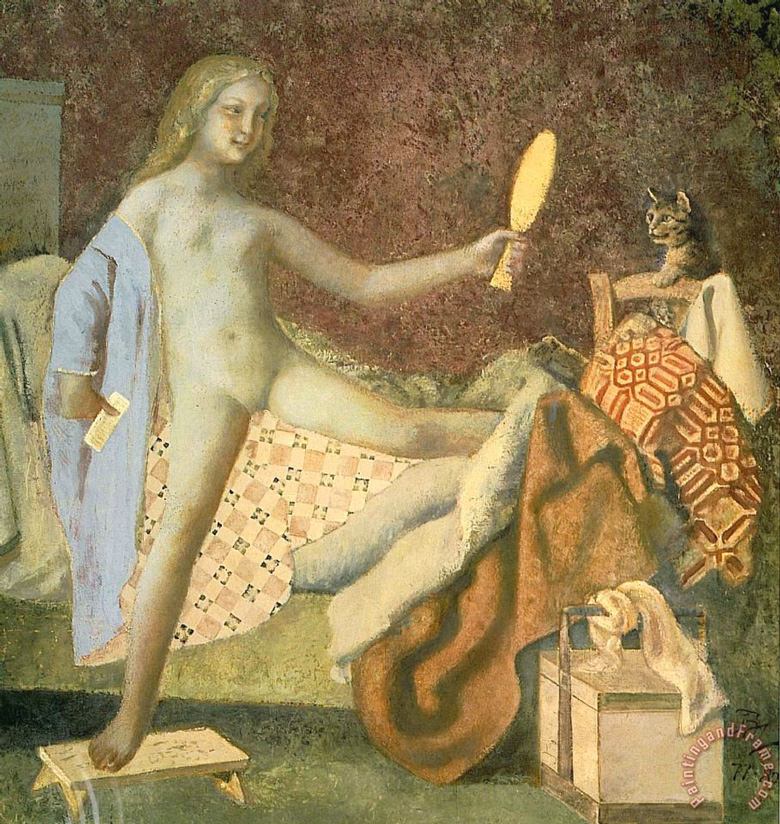
For Sigmund Freud, the solution to this apparent contradiction would have been easy. Balthus claimed that he had never stopped looking at the world as a child. His childhood was a refuge, a paradisiacal environment that broke down as his teenage began and war broke out.
He has always been obsessed with representing childhood, that childhood portrayed by Lewis Carroll in “Alice in Wonderland” and Alicia Liddel in her photographs, naive and erotic at the same time. His painting evolves from a sharp sharpness, sometimes reminiscent of the New Objectivity, to a blurred ambiguity typical of the Italian Renaissance painting.
Balthus‘s life is full of mysteries that he himself cultivated, not giving interviews or spreading contradictory or false data.

For Guillermo Solana, artistic director of the Museo Thyssen (Madrid), the important thing is to look at his paintings:
“In them are their truth and their value”.
The curators of the last exhibitions in Basel and Madrid, Raphael Bouvier and Angel López-Manzanares, try to clear their history, assuming everything is questionable.
One of the great specialists of his work is Sabine Rewald, curator of the Metropolitan Museum in New York. Coinciding with the exhibition at the Museo Thyssen in Madrid, we explore the vital trajectory of the artist.
What most baffles his critics is that he said of himself that he was a religious painter. In his biography “Memories” (Editorial Lumen, 2002), he wrote:
“I always start a picture praying”
In 2001 Balthus died in his “private castle” with 93 years. The head of his bed was chaired by an image of the Virgin of Czestochowa, patron of Poland and a rosary, gift of Pope John Paul II.
With these contradictory data, we get a vague idea of the essence of the painter. He completes the portrait, his indifference to the Vanguards of the twentieth century, his admiration for the former masters of painting, his passion for Piero della Francesca, Masaccio, David, Poussin, Chardin and Courbet, his fervent devotion to the Louvre Museum,, which It was his personal art academy.

After his death, the scandal still continues. Continuing with the contradictions and breaking all stereotypes, several Balthus paintings have been the subject of controversial ignitions, for representing adolescents in provocative positions.
When he exhibited at the Metropolitan Museum in New York, his painting “Thérèse dreaming” (1938), led to the collection of more than eleven thousand signatures asking for his withdrawal from the museum. If Balthus‘s paintings show something, there are many delicate nuances between desire and innocence. Or between the freshness of youth and the ancient mystery of life.
“Beauty is but the beginning of the terrible”
Rilke
There seems to be no break between the sacred and the profane. That is why Balthus could say that the girls in his paintings are angels.
If something shows his work, there are many delicate nuances between desire and innocence. Again in his “Memories,” he warns:
“Today the millennial virtues of silence and work, of secret and deep, dialogue with the invisible, which for me, is also the divine, are unknown. It is the apparent reconstruction on the canvas, which comes from far away, from a very old place. ”
Balthus was an advocate of the trade of painting although he created just three hundred paintings. Renoir painted 5,000 and Picasso 45,000 works.
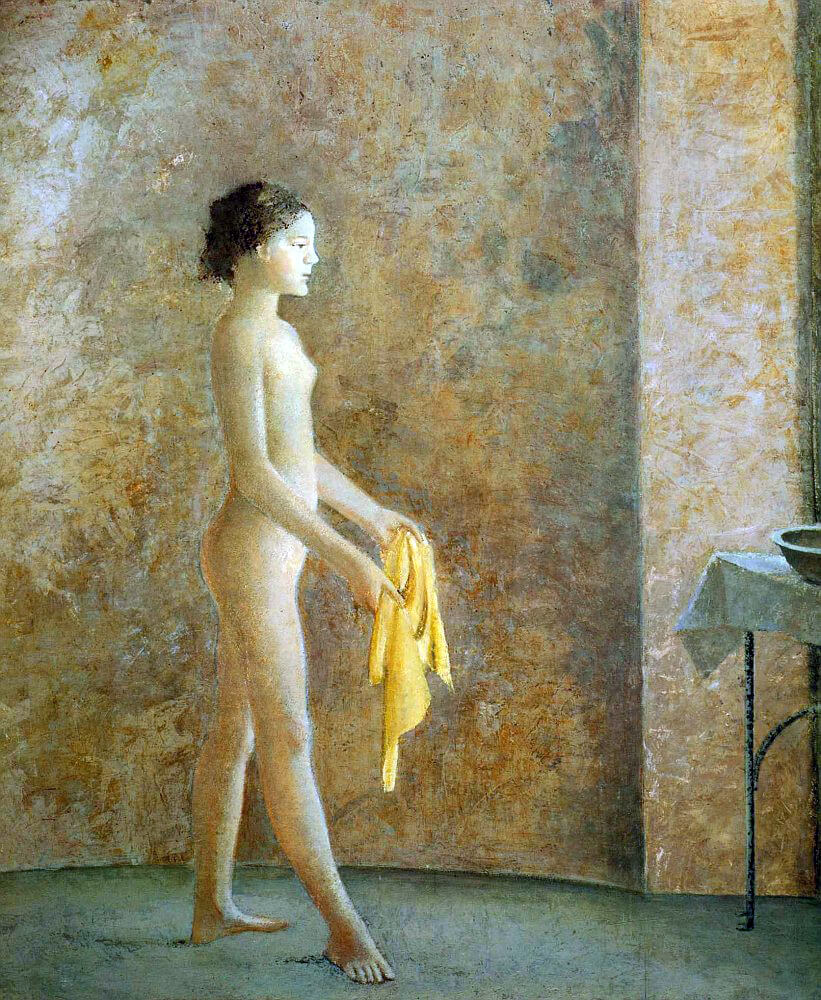
Balthus always practiced a timeless realism, throughout his long existence because he lived almost a century (1908-2001). In most of his canvases we feel a particular silence. It comes from the disconnection of the figures, which are almost always ignored. It also transmits a strange suspension of time. Perhaps we perceive the echo of ancient compositions, which as spectators, we have stored, unknowingly, somewhere in visual memory, in the collective subconscious that Jung‘s Philosophy discovered.
Unlike the dogmas of the avant-garde, Balthus preferred Piero Della Francesca over any modern painter. However, Picasso often visited him in his studio and admired him for the courage with which he challenged the Renaissance who, like Miguel Angel and Leonardo Da Vinci, had incorporated psychology into painting.
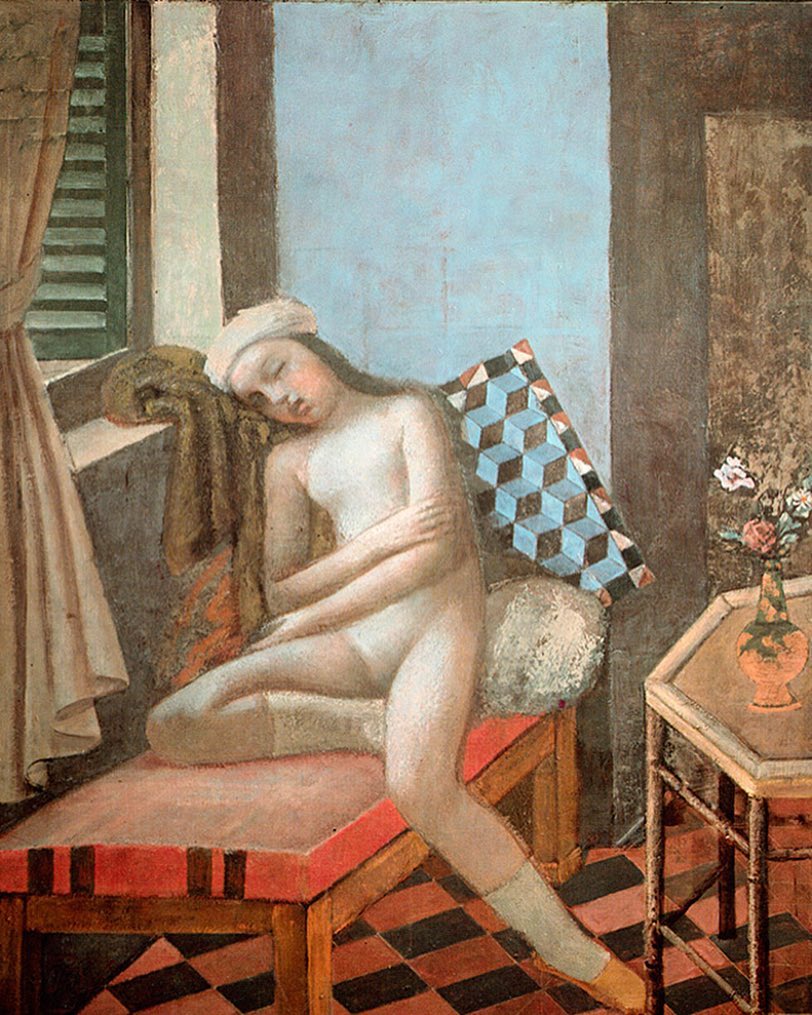
But Balthus is not interested in psychology. It does not pretend to discover characters, it does not want to describe personalities. He aims to reveal what is immaterial in the human condition, which we can only observe from the other, if we look at it very carefully. What you see, but you can’t catch. What we intuited, but we could not express. The ineffable. What is neither body nor character: the ambiguity of an existence. Balthus catches the ineffable, or as another writer said:
“The beating heart of the world …”
Albert Camus
Desire, amazement, loneliness, eroticism and innocence are just some of the emotions that arise from uncertainty and chaos in Balthus‘ pictorial work. He was a self-made artist, the perfect counter-current self-taught of all the Isms of 20th century European culture.
With his art, Balthus catches beating hearts and stops them in time.

